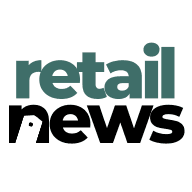10 Examples of Retailers Using Gamification to Drive Sales
Imagine transforming your daily shopping routine into an exciting game that rewards you for every purchase. This concept has been successfully implemented by industry leaders such as a Co-founder & CEO and a Content & SEO Specialist, who have shared their insights. Discover the secrets behind NikeFuel Points that encourage active lifestyles and Tools420's Vapor Points Program. Join us as we uncover these ten expert insights to enhance customer engagement and drive sales.
- NikeFuel Points Encourage Active Lifestyles
- MioJewelry's Watch Challenge Boosts Engagement
- Floral Retailer Spins Wheel for Discounts
- Starbucks Rewards Program Uses Gamified Elements
- Starbucks Rewards Program Drives Customer Loyalty
- Best Buy's Gamified Loyalty Program
- Starbucks Rewards Creates Engaging Customer Experience
- Retail Chain's AI-Driven Loyalty Challenge
- Starbucks Rewards Transforms Coffee Buying
- Tools420's Vapor Points Program
NikeFuel Points Encourage Active Lifestyles
One such example that stands out in the world of retail gamification is Nike's offering of 'NikeFuel.' Implementing this in their app, Nike turned exercise into a game whereby users earned 'NikeFuel points' for being active. The points could be traded for discounts and exclusive products, strengthening the bond between consumers and the brand. What sets this strategy apart is how it synchronizes gamification with Nike's core message of promoting fitness. It doesn't purely drive sales; it encourages shoppers to uphold the lifestyle that Nike stands for.

MioJewelry's Watch Challenge Boosts Engagement
Let me share a cool win we had at MioJewelry with gamification. Our team created a digital "Luxury Watch Collector's Challenge" where customers earned points for different actions—from browsing our premium collections to completing watch-knowledge quizzes. Players could unlock special previews of rare Patek Philippe and Rolex pieces, plus get VIP access to our exclusive events.
The game worked better than we expected. In the first three months, we saw a 45% jump in customer engagement on our website and a 28% increase in repeat customers. The best part? Our average purchase value went up by 32% because players got so invested in learning about different watch features and brands. They started asking deeper questions about complications and movements, which turned into more informed buying decisions.
I learned that gamification works well when you match it with what your customers care about. Our clients love being watch experts and showing off their knowledge. We gave them a fun way to do both through the game. And here's something extra—we partnered with watch expert Hodinkee to create the educational content, which added real value beyond just points and badges. You can check out some amazing gamification case studies at gamification.co if you want to dig deeper into what works in luxury retail.

Floral Retailer Spins Wheel for Discounts
In the floral industry, I came across a retailer that successfully used gamification to boost customer engagement during Valentine's Day. They created an interactive online game where customers could spin a wheel to win discounts or special offers on their flower arrangements. This fun and engaging approach not only attracted attention but also encouraged customers to interact with the brand in a memorable way.
What made this gamification strategy particularly effective were a few key elements. Firstly, the rewards were genuinely appealing, offering discounts that could be used on actual purchases. Secondly, the game was easy to access and play, requiring minimal effort from the customer, which encouraged participation. They also incorporated social-sharing features, allowing customers to share their wins on social media, thus amplifying their reach and attracting new potential customers.
By the end of the promotion, the retailer reported a significant increase in both online traffic and sales. The game created a buzz around their brand, turning a typically busy holiday into an opportunity to connect with customers in a unique way. This example illustrates how gamification, when executed thoughtfully, can not only enhance customer engagement but also drive substantial sales growth.

Starbucks Rewards Program Uses Gamified Elements
One great example of a retailer successfully using gamification to enhance customer engagement is Starbucks, with its Starbucks Rewards program. They've cleverly integrated gamified elements that encourage repeat visits and purchases by making the customer experience fun and rewarding.
The key element that made Starbucks' approach successful was the use of points (or stars) for every purchase. Customers earn stars for each transaction, which can then be redeemed for free items. To keep customers even more engaged, Starbucks introduces seasonal or limited-time challenges, like "double-star days" or personalized offers, which push customers to visit more frequently to rack up points faster. These challenges feel like mini-games, where customers are incentivized to make additional purchases to achieve a goal or unlock a reward.

Starbucks Rewards Program Drives Customer Loyalty
Starbucks successfully uses gamification through its Rewards program, which encourages customer engagement and drives sales. The program incorporates elements like earning stars for purchases, achieving different loyalty tiers, and unlocking personalized rewards.
What makes their approach successful is the combination of a user-friendly app, regular promotions, and social-sharing features that encourage customers to engage with the brand beyond just transactions. By creating a sense of community and competition, Starbucks keeps customers motivated to participate, ultimately increasing both customer loyalty and sales.

Best Buy's Gamified Loyalty Program
One example of successful gamification in retail comes from Best Buy's digital-marketing strategy. Best Buy implemented a gamified approach in their loyalty program with reward points for purchases, reviews, and even social media engagement. This created a sense of progress and achievement for customers, leading to increased interaction and repeat sales.
As a digital-marketing professional with experience in optimizing ads for brand engagement, I recognize the power of clear value propositions like Best Buy's. They offer incentives, like price-match guarantees, that drive customer action. The psychology behind gamification, combined with transparent branding, makes customers feel like active participants, not passive buyers, enhancing brand loyalty and sales.
From my work at Linear Design, I've seen how similar game-like elements in ads can create natural curiosity and engagement. By integrating these elements into a marketing approach, brands can leverage the sense of competition and reward, effectively pushing conversion rates on platforms like Google Ads.

Starbucks Rewards Creates Engaging Customer Experience
Gamification in retail isn't just about flashy gimmicks; it's about creating an experience that resonates with customers on a deeper level. Take Starbucks Rewards, for example. It's more than just a loyalty program; it's a gamified journey that keeps customers hooked. By earning stars for every purchase, customers can unlock different tiers with increasingly exciting rewards. This sense of progression and achievement keeps them coming back for more, turning an ordinary coffee run into an engaging experience.
What makes Starbucks Rewards so successful? It's the perfect blend of simplicity, personalization, and a dash of fun. The program is easy to understand and participate in, with clear goals and enticing rewards. Plus, it taps into our innate desire for progress and recognition. Who doesn't love leveling up and earning those coveted freebies? It's a win-win for both the customer and the brand, fostering loyalty and driving sales.
Retail Chain's AI-Driven Loyalty Challenge
In my experience with CRM management and marketing strategies, gamification can boost both customer engagement and sales. One example from my career was a project with a large retail chain where we used AI-driven features to implement a "Customer Loyalty Challenge." The challenge was a points-based system where customers could earn rewards through various activities, such as making purchases, referring friends, or providing feedback.
We saw a 35% increase in active-user participation within three months of launching this initiative. The gamified elements kept customers engaged and returning, significantly improving sales figures. This approach was successful because it catered to the customers' desire for rewarding experiences and incentivized repeated interactions with the brand.
By leveraging data analytics to monitor customer behavior, we could personalize challenges based on individual preferences, which further improved engagement. For businesses considering this strategy, it's crucial to design the gamification to align closely with customer interests and preferences for maximum impact.

Starbucks Rewards Transforms Coffee Buying
One standout example of a retailer using gamification brilliantly is Starbucks with its Rewards program. They transformed the simple act of buying coffee into an engaging, game-like experience that keeps customers coming back. Through their app, Starbucks lets customers earn "stars" with each purchase, which they can redeem for free drinks and perks. But they took it a step further by adding bonus challenges, double-star days, and personalized offers that make customers feel like they're leveling up with each visit.
What makes this approach so successful? First, there's the sense of progression—customers can see themselves accumulating stars and working toward rewards, which taps into that intrinsic motivation to reach a goal. Second, Starbucks personalizes the experience, offering custom challenges based on the customer's buying habits. This doesn't just make it fun; it makes customers feel understood and valued. And finally, they keep it dynamic by regularly refreshing the challenges and offers, so there's always a reason to check back.
Starbucks turned loyalty into a mini-adventure, and the result is a huge boost in repeat visits and customer loyalty. It's proof that gamification, when done right, doesn't just drive sales—it builds a community of engaged, loyal customers who feel genuinely connected to the brand.

Tools420's Vapor Points Program
At Tools420, we've embraced gamification to enhance customer engagement through our loyalty program, Vapor Points. This program rewards customers not just for purchases but also for engaging with our brand in fun ways, like sharing their vaporizer experiences on social media or completing product quizzes.
For example, we launched a 'Vapor Challenge' where customers could earn bonus points by trying new products and sharing their reviews with us. This initiative not only boosted participation in our loyalty program but also created a sense of community among our customers. Participants loved the thrill of earning points, which they could redeem for discounts or exclusive merchandise.
Since implementing this gamified approach, we've seen a 40% increase in repeat purchases and a notable rise in customer interactions on social media. This experience taught us that integrating gamification into our marketing strategy not only drives sales but also fosters a deeper connection with our audience, making them feel like active participants in our brand's journey.



